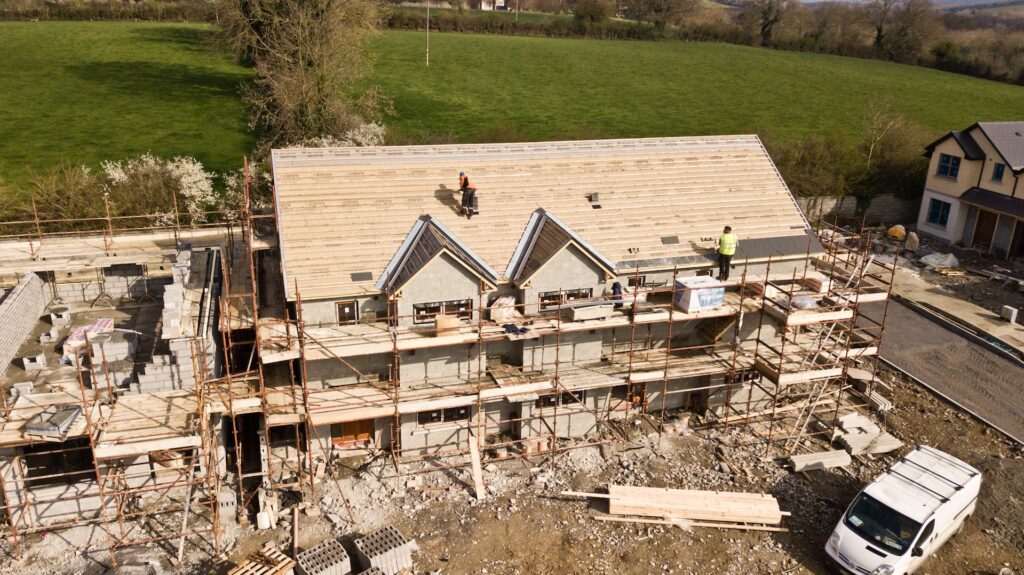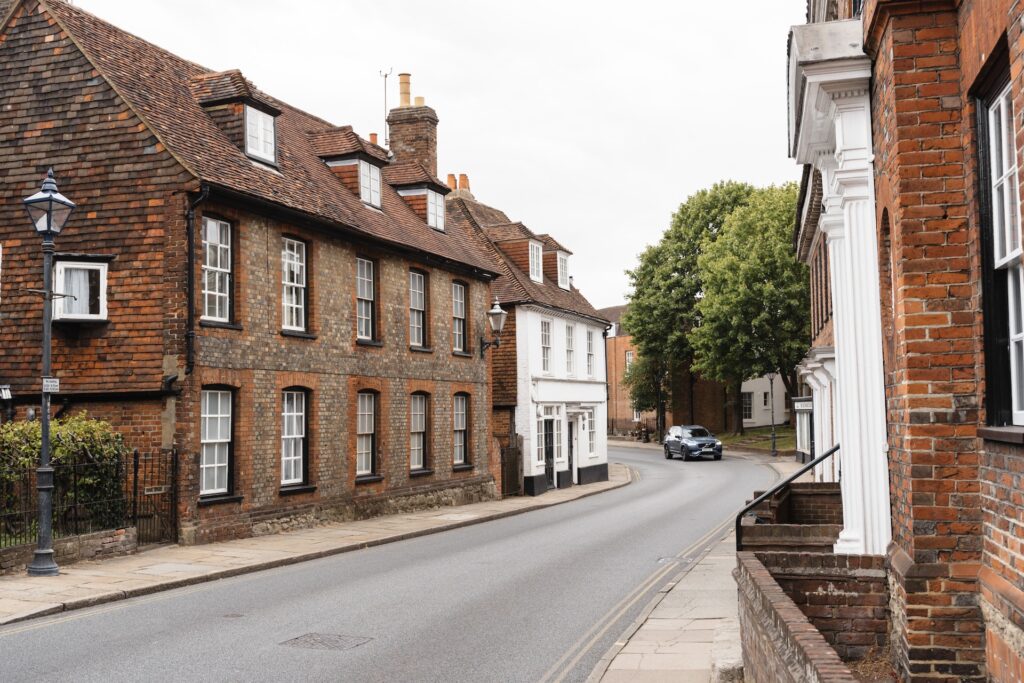WHAT IS COMMERCIAL REAL ESTATE?
A definition of commercial real estate is property where businesses run their operations. Commercial real estate is a broad term for a variety of properties, which can range from an office building to a restaurant. A detailed summary of each is below. Within these subsectors of commercial property, there are different classes of buildings, lease profiles, and locations that produce varying exposures to risk, return, and diversification to provide variety in the property portfolio.
Location is a key consideration for tenants when searching for a facility to base their operation from; for example, industrial buildings that exist near highways and key roadway connections make business logistics as simple as possible. This has historically produced relatively stable and consistent income due to longer average lease terms of between 3 and 10 years compared with residential property, which is commonly 6 to 12 months.

CLASSIFICATIONS OF COMMERCIAL REAL ESTATE
When comparing commercial real estate, it is ranked according to age, quality, and location. This helps inform investors, potential tenants, and other professionals about the condition and value of a particular property. The list below sets out the classes of commercial real estate:
- Class A: The newest buildings with high-quality construction, infrastructure, and location.
- Class B: Properties that have high-quality construction but a less appealing location or are slightly older in age.
- Class C: buildings that are over 20 years old, require significant maintenance, and/or are in an unfavourable location.
THE 6 TYPES OF COMMERCIAL REAL ESTATE
Commercial real estate is classified into the following categories:
1) Office space
Office space includes all office buildings that are suitable to run workforce operations from. Commonly, a tenant in an office building will need significant capital expenditures to fit out the building. Furthermore, at the backend, there is a cost to reinstate the building to its original condition as set out in the lease. When establishing the lease term, tenants need to ensure the capital expenditure is worth it.
The development of flexible workspace has created an alternative product for companies. It benefits companies that have a low capital budget or short time horizons. The flexible workspace model dictates higher prices and less privacy. Although, as the name suggests, the tenants have complete flexibility in terms and the space is already fitted out.
2) Industrial space
The industrial real estate sector benefits companies that require manufacturing space, assembly lines, and warehouse storage. Furthermore, last-mile logistics delivery, and mixed space that can be a hybrid of industrial and office space. The location is key for industrial; easy access for large vehicles to highway systems is a big driver for the sector. Examples of tenants that are large exponents of industrial property are companies such as Amazon and supermarkets.
3) Retail spaces
The retail sector consists of buildings that lead businesses where instant transactions occur. Larger properties, such as shopping centres, will typically have an anchor tenant. This is simply a larger tenant that draws other businesses to the site from the foot traffic the anchor tenant naturally creates. For example, the landlord would offer the department store, John Lewis, a lower rent of 5–10%. In the hope they would drive the popularity of the shopping centre with both prospective tenants and punters. The other types of retail properties are strips, commonly seen on high streets in cities and towns. These typically contain a mix of large and small stores such as food and beverage, hair, and beauty stores, as well as a few major retailers and banks.
4) Mixed-use properties
Mixed-use properties are typically any combination of the above categories plus residential. The most common examples are retail on the ground floor and offices or residential apartments on the upper floors. Ownership of these types of buildings can be a good way to achieve diversification. This is because you have multiple tenants and property sectors that are producing your income.
5) Hotels
There are three different categories for hotels. Firstly, the conventional multi-room hotels with at least one bar or restaurant, such as the Holiday Inn or Grand Hyatt. Secondly, hotels provide limited-service or apartment hotels that are smaller and may not offer services like 24-hour desk services. Finally, extended stay hotels offer larger rooms and amenity spaces, which are more similar to serviced apartments. Some larger hotel providers, such as the Shangri-La, offer both full-service rooms and serviced apartments in their buildings.
6) Special-purpose
Special-purpose real estate includes commercial properties such as theatres, sports grounds, or car parks. Special purpose is very broad and essentially covers any type of commercial property that does not fit into the classical commercial property categories above.
THE 5 DIFFERENCES BETWEEN RESIDENTIAL PROPERTY AND COMMERCIAL REAL ESTATE INVESTMENT
Here is an overview of the differences between residential and commercial real estate:
1) Purpose
The purpose of Commercial property is to generate income for landlords, whereas residential property can either be lived in or leased. Low numbers of commercial properties are owner-occupied.
2) Repair obligations
In commercial property, tenants bear the majority of the repair obligations of the property they occupy. Large multi let office blocks are largely internal repairs only, and so the landlord is in charge of the external fabric of the building, although single-let buildings tend to have the repair obligations fully on the tenant (these are obviously negotiable terms in a lease, although this is common practise).
In tenanted residential property, repair obligations are governed by Section 11 of the 1985 Landlord and Tenant Act. The Act requires landlord to repair the exterior of the building, provide water, gas, electricity and heating to the property. Furthermore, repair any sanitary appliances. Although, in reality, the landlord pays considerably more than what’s stated in Section 11.
3) Lease length:
As previously mentioned, commercial real estate leases are generally 3 to 10 years or more, compared to residential leases, which are 6 to 12 months.
4) Pricing values
The rental asking price for commercial real estate is traditionally marketed as a price per square foot basis. Whereas, in the residential market, properties are marketed by quoting the total monthly rent.
5) Yields
Commercial property yields are higher in the region of 5%–10% than residential yields, which are in the region of 3%–6%. A yield reflects the risk of an investment. Commercial leases commonly create longer void periods between tenancies because of more due diligence and a small tenant pool. To calculate the capital value of the property you capitalise the rent achieved by a market yield. Whereas to value residential property, you would use comparable market transaction evidence and not solely the investment characteristics.
CONVERTING COMMERCIAL REAL ESTATE TO RESIDENTIAL
A recent trend of using permitted development rights to repurpose poor-quality office space for alternative uses such as residential has really taken off. According to Savills research in April 2021, permitted development had led to approximately 50,000,000 sq ft of office space converted into residential during the period of 2015–2020. This has significantly affected the regional office supply by reducing supply in 2021 by 35% since 2009, largely due to the surge in permitted development. This is a large topic, and I will go into more detail on it in future journals.

COMMERCIAL REAL ESTATE SUMMARY
Commercial real estate is the backbone of running a functional business. In central business districts in all cities in the world, the different blends of commercial property play a key role in complementing one another through the atmosphere each facility provides to an area.
Social trends brought on largely by the COVID-19 pandemic have created a period of change for the commercial property sector. The drive for workforce flexibility and the growth in e-commerce are changing the requirements of tenants and ultimately investors, who need to be flexible to adapt to the changes in demand.




